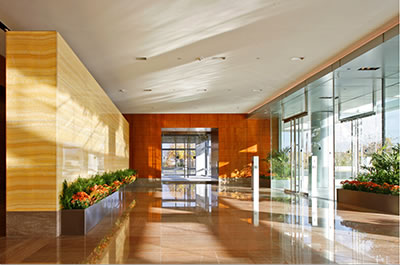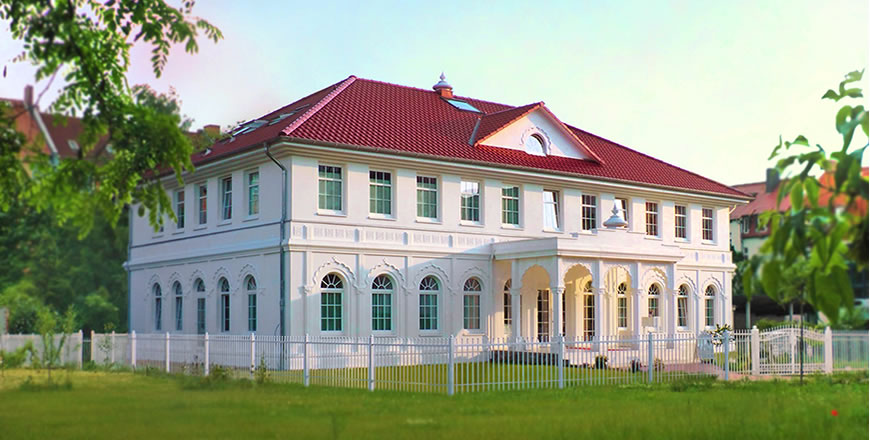Research on Maharishi Sthapatya Veda
(also known as Maharishi Vastu) –
the Foundation of FeelGood® Homes
Examination of the Effects of Living and Working in Maharishi Vastu Buildings.
Compiled by Jon Lipman, AIA, Maharishi Sthapatya Veda Institute, Maharishi University of Management, Fairfield, Iowa ,USA.
Holistic System – Offices
 2000 Tower Oaks Boulevard in Maryland, USA, adheres to the strictest principles of green architecture. The building is the is world’s largest commercial application of Maharishi Sthapatya Veda.
2000 Tower Oaks Boulevard in Maryland, USA, adheres to the strictest principles of green architecture. The building is the is world’s largest commercial application of Maharishi Sthapatya Veda.
Maharishi Vastu architecture is a holistic science. When multiple predictors are present the effects are anticipated to be stronger. A preliminary study examined this prediction. In this study, 30 publicly-owned businesses were selected randomly in the Faroe Islands, a territory of Denmark. Five years of financial records for each company were compiled from public records, as were aerial photos, topographic maps, and site plans of their headquarters. Companies were excluded from the study if their income was not generated within their headquarters – fishing and shipping companies, for example, were therefore excluded. A Maharishi Vastu consultant evaluated the collected drawings and photos of each building and concluded that there were five Maharishi Vastu factors that can be observed in the documentation on each company:
-
- Building orientation:
- Building shape;
- Direction of nearest mountain;
- Direction of nearest water body;
- Orientation of fenced enclosure around the building, where present.
The consultant graded each company according to the predicted influence of each of the five factors and compiled a single numerical predictor for their overall influence, and ranked the companies on the basis of this predictor. Independently, the study’s lead researcher, a professor of business and statistics, ranked the financial success of the companies on the basis of the amount of profit generated per employee over the five year period and other standard financial statistics. In 27 out of the 30 companies the researchers report that the Vastu architecture indices correlated with the amount of profit generated per employee by the companies. 27 out of 30 is a remarkably high correlation.
Olavur Christiansen, Ph. D., University of the Faroe Islands, Denmark, and Maharishi Vastu consultant Carmen Quinton. This report is based upon an oral presentation made by Christiansen in August of 2001 to the faculty of the business school at Maharishi University of Management, Fairfield, Iowa.

Ground Floor – 2000 Tower Oaks Boulevard

 A school built according to Vastu principles in Bhopal, Madhya Pradesh, India.
A school built according to Vastu principles in Bhopal, Madhya Pradesh, India. A commercial Sthaptya Veda building in Germany.
A commercial Sthaptya Veda building in Germany.